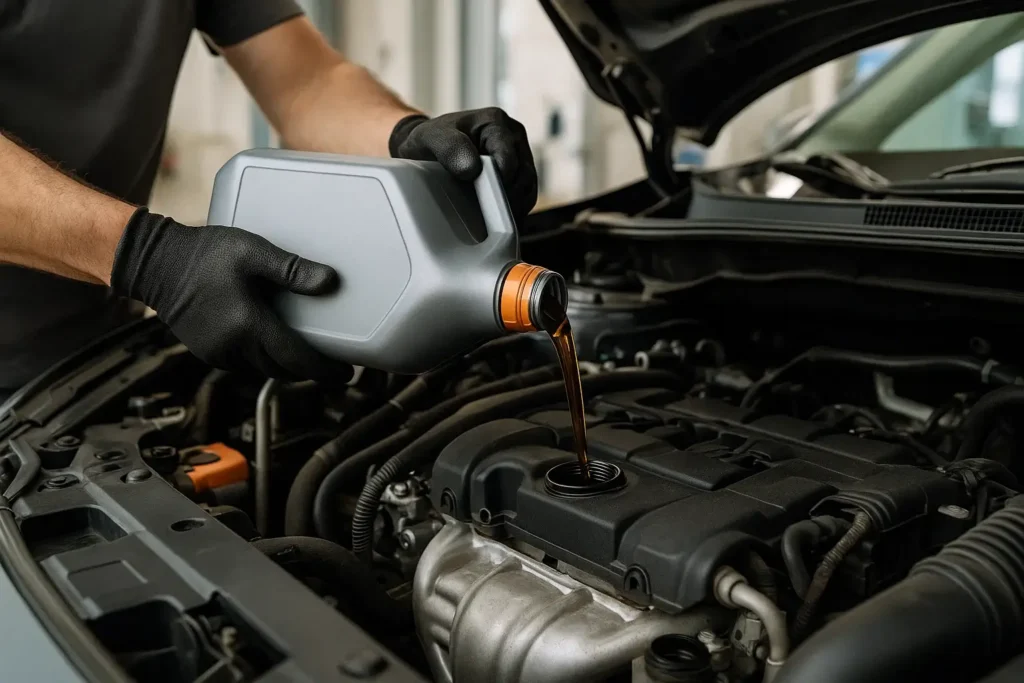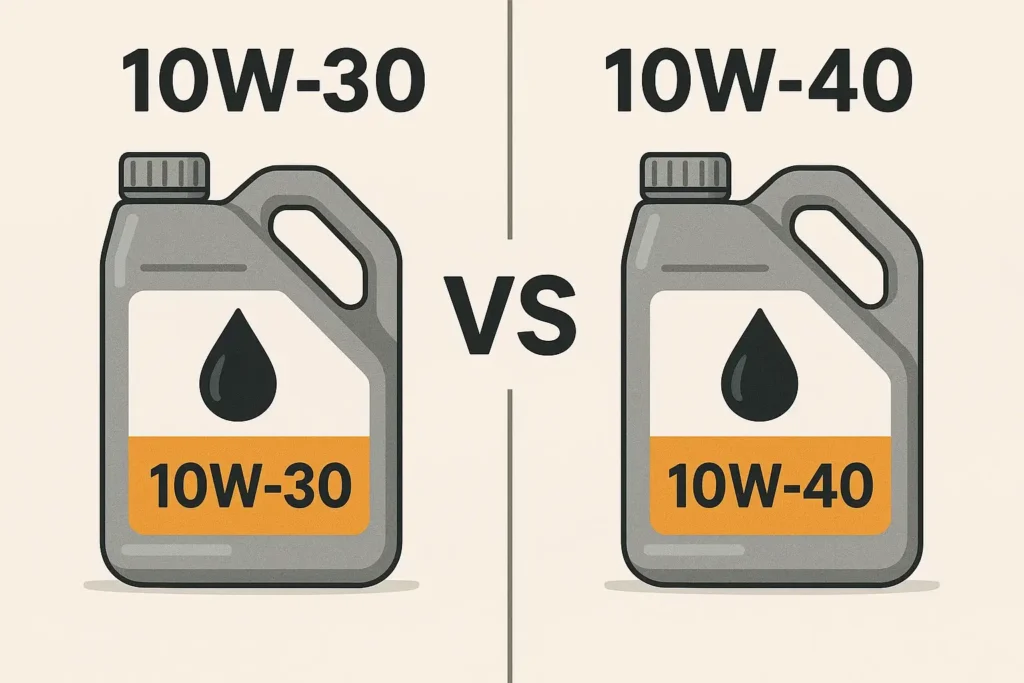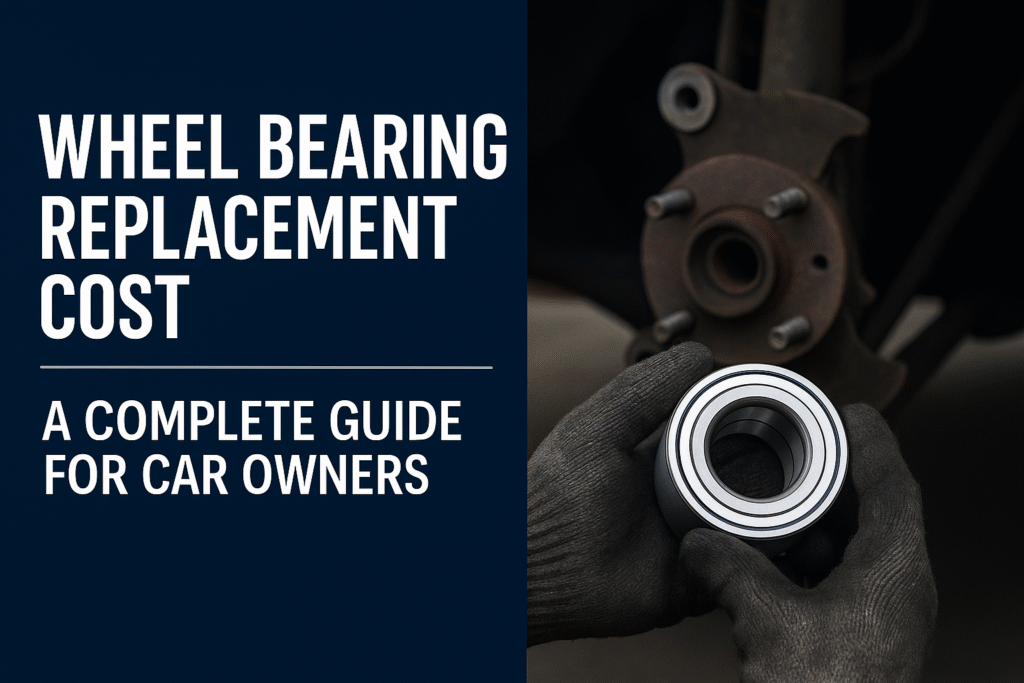When it comes to choosing the right motor oil for your car, the decision can be more complicated than simply picking a brand. The viscosity rating of the oil, such as 10W30 vs 10W40, plays a critical role in engine performance, protection, and longevity. Understanding these ratings can help you make an informed choice for your vehicle’s needs. In this guide, we’ll break down the key differences, characteristics, and applications of 10W30 and 10W40 motor oils, ensuring you choose the best option for your engine.
Understanding Motor Oil Viscosity: What Does 10W30 and 10W40 Mean?
Before diving into the specific differences between 10W30 and 10W40, it’s important to understand how motor oil viscosity works.
The Basics of Motor Oil Viscosity
Motor oil viscosity is represented by a two-number code, like 10W30 or 10W40. The first number (e.g., 10) indicates the oil’s flow ability in cold temperatures, with a lower number meaning the oil flows more easily in cold weather. The “W” stands for Winter, highlighting the oil’s performance during colder temperatures.
The second number represents the oil’s thickness at higher temperatures. For example, 30 and 40 refer to how thick the oil is at an engine’s operating temperature (typically around 100°C). The higher the number, the thicker the oil.
| Property | SAE 10W-30 | SAE 10W-40 |
|---|---|---|
| Kinematic Viscosity @ 100°C | 9.3 – 12.5 mm²/s | 12.5 – 16.3 mm²/s |
| Kinematic Viscosity @ 40°C | ~60 – 90 mm²/s | ~90 – 130 mm²/s |
| Viscosity Index (VI) | ~140 – 160 | ~140 – 160 |
| Low Temp Cranking Viscosity | Max 7,000 cP @ -25°C | Max 7,000 cP @ -25°C |
| Low Temp Pumping Viscosity | Max 60,000 cP @ -30°C | Max 60,000 cP @ -30°C |
| High Temp High Shear (HTHS) | ≥ 2.9 mPa·s @ 150°C | ≥ 3.5 mPa·s @ 150°C |
| Engine Suitability | Newer engines, moderate climates | Older engines, hot climates, heavy-duty |
| Fuel Economy | Slightly better (lower viscosity) | Slightly lower (thicker oil) |
| Protection at High Temp | Good | Better due to higher viscosity |
Importance of Choosing the Right Viscosity for Your Engine
Choosing the right oil viscosity ensures that your engine receives optimal lubrication for both cold starts and while operating at high temperatures. The right viscosity helps protect engine parts, improve fuel efficiency, and reduce wear.
10W30 Motor Oil: Characteristics, Benefits, and Ideal Use Cases
What is 10W30 Motor Oil?
10W30 is a multi-grade motor oil designed to work in a variety of temperatures. The 10 indicates that it performs well in cold temperatures (winter), making it a great choice for mild to moderate climates. The 30 refers to its thickness at engine operating temperatures, providing adequate protection under standard driving conditions.
When to Use 10W30 Motor Oil
10W30 is ideal for vehicles in temperate climates where temperatures do not exceed extreme highs. It works best in newer engines, as well as those that undergo moderate driving conditions, such as daily commuting or highway driving. If your vehicle is running under light engine loads and doesn’t often experience high-stress driving, 10W30 is a reliable choice.
Performance Benefits of 10W30
- Enhanced Fuel Efficiency: Because 10W30 is a thinner oil, it results in less internal engine friction, helping improve fuel economy.
- Good Cold Weather Performance: The oil’s lower winter rating (10W) helps it flow smoothly during cold starts, ensuring quicker lubrication.
- Optimal Engine Protection: The oil offers adequate protection for most engines under normal operating conditions, maintaining engine performance and longevity.
Common Applications for 10W30
10W30 is often used in family sedans, compact cars, light trucks, and SUVs. It is also commonly found in mild climates where the temperatures typically stay within a moderate range, making it perfect for everyday use in areas with no extreme seasonal changes.

10W40 Motor Oil: Characteristics, Benefits, and Ideal Use Cases
What is 10W40 Motor Oil?
Similar to 10W30, 10W40 motor oil has the same low-temperature viscosity rating (10), meaning it will perform well in cooler weather. However, the key difference lies in the second number: 40, indicating that it has a thicker viscosity at high temperatures compared to 10W30. This thicker oil is more suited for engines that experience higher temperatures or heavy workloads.
When to Use 10W40 Motor Oil
10W40 motor oil is ideal for vehicles that operate in warmer climates or those exposed to high engine stress. If your vehicle is older, has higher mileage, or is used for heavy-duty tasks like towing, off-roading, or high-performance driving, 10W40 offers superior protection against engine wear.
Performance Benefits of 10W40
- Better Protection in Hot Weather: Due to its thicker consistency at higher temperatures, 10W40 provides better protection in hot climates or under high engine loads.
- Reduces Oil Burn-Off: The thicker oil helps reduce evaporation at high temperatures, which is common in vehicles with higher mileage or older engines.
- Superior Engine Wear Protection: The increased thickness ensures that the engine components remain lubricated and protected under heavy loads, helping extend the engine’s lifespan.
Common Applications for 10W40
10W40 is commonly used in older engines, high-mileage vehicles, and performance vehicles. It’s also preferred for vehicles involved in high-stress driving conditions, such as towing, off-roading, or sporty driving in hot climates.
Key Differences Between 10W30 vs 10W40 Motor Oils
Low-Temperature Performance (Winter Rating)
Both 10W30 and 10W40 have the same low-temperature rating of 10W, meaning they are equally capable of performing well in cold weather. The oil will flow easily during cold starts, reducing wear and tear on engine parts during winter months.
High-Temperature Performance (Operating Temperature)
- 10W30: Thinner and less viscous at high temperatures, which can lead to slightly less protection under extreme engine stress, especially in hotter conditions.
- 10W40: Thicker at operating temperatures, offering more robust protection under high temperatures and heavy loads. This makes it a better option for vehicles operating in hotter climates or for those regularly subjected to strenuous conditions.
Fuel Efficiency and Engine Efficiency
- 10W30: Its thinner consistency leads to better fuel efficiency as it generates less internal friction in the engine.
- 10W40: While it provides better protection under stress, its thicker consistency can reduce fuel efficiency slightly compared to 10W30.
Ideal Engine Types and Conditions
- 10W30: Ideal for newer cars, daily commuters, and vehicles that face moderate loads in mild to temperate climates.
- 10W40: Best for older engines, high-mileage vehicles, or cars used for heavy-duty tasks such as towing or off-roading, especially in warmer climates.
Factors to Consider When Choosing Between 10W30 and 10W40
Climate and Temperature
- Cold Weather: If you live in a region with harsh winters, both 10W30 and 10W40 will perform similarly in cold starts, but consider switching to a lower-viscosity oil (like 5W30) for extreme cold.
- Hot Weather: 10W40 is better suited for hot climates or for vehicles that frequently operate in high-stress conditions where more protection is needed.
Vehicle Age and Engine Type
- Newer Engines: 10W30 is often recommended for newer engines because it provides the right balance of fuel efficiency and engine protection for most daily driving needs.
- Older Engines or High-Mileage Vehicles: 10W40 is ideal for older engines, as it provides thicker protection that helps reduce wear and oil consumption over time.
Driving Conditions and Vehicle Usage
- Daily Commuting: If you drive in moderate conditions with regular commuting, 10W30 is a good choice for fuel efficiency.
- Heavy-Duty Use: If you use your vehicle for towing, off-roading, or high-performance driving, 10W40 offers superior protection under higher loads.
Practical Tips for Switching Between 10W30 and 10W40
Is It Safe to Switch Between 10W30 and 10W40?
It’s generally safe to switch between 10W30 and 10W40 for short periods, as long as the oil meets your engine’s requirements. However, consistently using an oil that is too thick for your engine (like 10W40 in a newer car) can lead to unnecessary wear, while using an oil that’s too thin (like 10W30 in an older engine) might result in inadequate protection.
How to Choose the Right Oil for Your Next Oil Change
Always refer to your vehicle’s owner’s manual to confirm the recommended viscosity for your car. If you’re uncertain, a professional mechanic can provide advice based on your engine’s condition, driving habits, and climate.
What Happens If You Use the Wrong Viscosity?
Using the wrong viscosity can lead to poor fuel economy, excessive engine wear, or insufficient lubrication. Always follow the manufacturer’s recommendations to avoid long-term damage.
Conclusion
Choosing between 10W30 vs 10W40 comes down to your engine’s needs, the climate you drive in, and how you use your vehicle. 10W30 is excellent for newer vehicles in moderate climates, offering better fuel efficiency and standard engine protection. On the other hand, 10W40 is a great option for older engines or those in hot climates, providing superior protection under heavy stress and higher temperatures.
To ensure the best protection and performance for your engine, always follow your vehicle’s owner’s manual recommendations and select the appropriate oil viscosity for your needs.
Can I switch from 10W30 to 10W40 oil?
You can, but it depends on your engine type and manufacturer recommendations. Switching to 10W40 may be helpful if your engine is older, burns oil, or runs in a hotter climate. However, using thicker oil in newer engines can impact fuel efficiency and performance.
Which oil is better for older vehicles?
10W40 is often preferred for aging engines with higher mileage. Its thicker consistency helps reduce wear, maintain oil pressure, and minimize leaks or oil burn-off. Always check your owner’s manual before making a switch.
Is 10W30 or 10W40 better for hot weather?
In hot climates, 10W40 is generally more effective. Its higher viscosity at operating temperature provides better lubrication and protection when your engine is under heat stress. 10W30 works best in milder weather conditions.
Will using the wrong oil cause engine damage?
Using oil outside the recommended range can lead to poor lubrication, overheating, and long-term engine wear. It’s best to follow the oil specs listed in your vehicle's manual to ensure proper performance and engine life.



